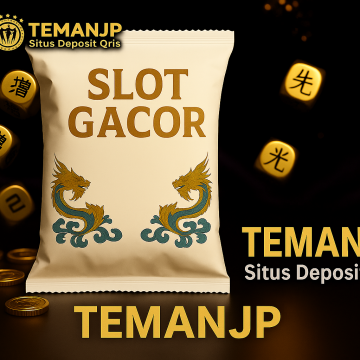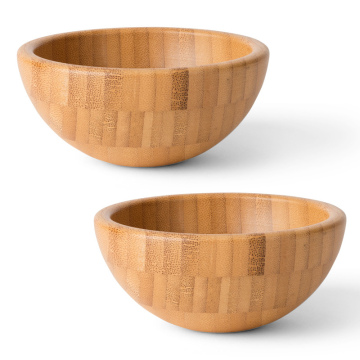Nostalgic Bites: A Trip to Enjoy Japan’s Beloved Nikujaga
The Heartwarming Story Behind Nikujaga
Nikujaga, a comforting and hearty dish, holds a special place in Japanese cuisine, often evoking cherished memories and familial bonds. Culinary Traditionally made with thinly sliced beef, potatoes, carrots, and onions simmered in soy sauce and sweet mirin, nikujaga not only satisfies the palate but also nourishes the soul. This dish can be traced back to the Meiji era, around the late 19th century, when Western culinary influences began permeating Japanese cooking. The inclusion of beef marked a significant shift from the culinary traditional meatless meals prevalent during Japan's earlier periods.
Over the decades, nikujaga has evolved from its Western-inspired roots into a quintessential comfort food widely embraced by families across the nation. The name itself combines "niku," meaning meat, and "jaga," an abbreviation of "jagaimo," the Japanese word for potatoes. This blend underscores the dish's fundamental components and its evolution into a beloved staple. Families often associate nikujaga with warming potluck dinners, festive gatherings, and nurturing moments shared around the dining table. These occasions highlight the emotional significance of the dish, as it symbolizes care and love through the shared act of cooking and enjoying a meal together.
A pivotal aspect of nikujaga's charm lies in its versatility; variations exist across regions and households, reflecting personal preferences and seasonal ingredients. For many, the culinary experience of cooking nikujaga has become a treasured family culinary tradition passed down through generations, fostering deeper connections among family members. Recipes are often handed down with anecdotes and stories, reinforcing the shared history and communal ties. The simple act of serving nikujaga evokes a sense of nostalgia, reminding individuals of their childhood and the warmth of home-cooked meals, further embedding the dish within the fabric of Japanese cultural identity.
Ingredients and Preparation: Crafting the Perfect Nikujaga
Nikujaga, a quintessential Japanese comfort dish, primarily consists of three main ingredients: sliced beef, potatoes, and onions. The simplicity of these components belies the depth of flavor that can be achieved through careful preparation and cooking. When selecting beef for nikujaga, opt for well-marbled cuts such as sirloin or chuck that can tenderize while simmering. Thinly slicing the meat allows it to absorb the sweet and savory flavors during the cooking process.
The potatoes used in nikujaga are preferably waxy varieties, such as Yukon Gold, which hold their shape well while becoming delectably tender. It's advisable to cut them into uniform pieces to ensure even cooking. Onions contribute sweetness and complexity; yellow onions are commonly used, though sweet onions can add a milder flavor profile.
In addition to these primary ingredients, nikujaga typically includes soy sauce, sugar, mirin, and dashi—a traditional Japanese broth made from kelp and bonito flakes. Each of these ingredients enhances the overall umami of the dish. When preparing nikujaga, layering flavors is crucial. Begin by sautéing the sliced onions in a pot until they become translucent, which releases their natural sugars. Next, add the beef, browning it lightly to seal in flavor before introducing the other ingredients.
To prepare the dish, combine the sautéed ingredients with the dashi, soy sauce, sugar, and mirin. Bring the mixture to a gentle simmer and then add the potatoes. Cover the pot to retain moisture and ensure even cooking. A common pitfall is overcooking the vegetables; keeping an eye on texture is essential. The potatoes should be fork-tender but not mushy. By following these guidelines and adjusting the sweetness or saltiness to personal taste, one can achieve a harmonious nikujaga that is both comforting and delicious.
Regional Variations: Exploring Nikujaga Across Japan
Nikujaga, a beloved comfort food in Japan, transcends regional boundaries, with each area imparting its unique flavor and character to the dish. Originating from the Kansai region, especially in areas like Osaka and Kyoto, nikujaga typically features thinly sliced beef, potatoes, and onions seasoned with soy sauce and mirin. However, its preparation and presentation can vary significantly across the archipelago, influenced by local ingredients and culinary traditions.
In Hokkaido, for instance, the abundance of fresh vegetables leads to the incorporation of local produce such as corn and carrots, enriching the dish's flavor profile. Local chef Maiko Yamaguchi notes, "In Hokkaido, we use ingredients that reflect the harvest seasons, resulting in a brighter, sweeter nikujaga." This variation highlights the regional practice of using seasonal produce to enhance traditional recipes, embracing the philosophy of "shun"—eating foods at their peak freshness.
Traveling to the southwestern region of Kyushu, one may encounter a heartier version of nikujaga that employs pork instead of beef, alongside unique sweet potatoes. This adaptation caters to local tastes and uses ingredients readily available in the area. According to home cook Haruto Suzuki from Kumamoto, “Our families often make nikujaga with pork because it blends beautifully with the sweetness of our local potatoes.” Such adaptations not only cater to local preferences but also reflect cultural practices surrounding meal preparation and family traditions.
Lastly, in the bustling metropolis of Tokyo, nikujaga often appears at izakayas (Japanese pubs), where chefs may introduce influences from other cuisines. A modern twist can include the addition of a fried egg on top or a sprinkling of yuzu zest, creating a fusion that is both nostalgic and contemporary. This melding of flavors showcases Tokyo's dynamic approach to traditional dishes while paying homage to the essence of nikujaga.
These regional variations illustrate not only the adaptability of nikujaga but also the importance of local ingredients and culinary heritage, enhancing its role as a nostalgic yet versatile part of Japan's gastronomic landscape.
The Modern Nikujaga: Contemporary Twists on a Classic Dish
Nikujaga, a traditional Japanese comfort food, has found its way into the modern culinary landscape, with chefs and home cooks alike exploring innovative adaptations. These contemporary twists breathe new life into the age-old recipe while respecting its essential qualities. The versatility of nikujaga allows for the incorporation of international ingredients and cooking techniques, creating unique and exciting fusion dishes that appeal to diverse palates.
One popular modern adaptation includes substituting classic ingredients. For instance, some chefs experiment with leaner cuts of meat or plant-based proteins, reflecting a growing demand for healthier meals. Alternative vegetables, such as sweet potatoes or seasonal greens, are often introduced to enhance nutritional value and introduce new textures. Furthermore, the use of aromatic spices and sauces draws influence from various international cuisines. Such innovative applications have transformed nikujaga from a simple home-cooked dish into an extraordinary culinary experience.
To gain insight into the evolution of nikujaga, several prominent chefs and food bloggers have shared their culinary experiences. Chef Aiko Tanaka, known for her innovative takes on traditional cuisine, emphasizes the importance of balancing flavors while exploring modern variations. She notes that the creative process often involves paying homage to the original recipe while transforming it to suit contemporary tastes. On the other hand, food blogger Kenji Nakamura highlights how home cooks can experiment with ingredients, making nikujaga a canvas for personal expression and regional flavor influence. His recipes encourage culinary exploration, inviting enthusiasts to adapt the dish to local produce and availability.
This creative movement surrounding nikujaga not only nurtures the dish’s legacy but also showcases how tradition can harmoniously coexist with modern gastronomy. As chefs and home cooks continue to expand the boundaries of nikujaga, this beloved dish remains a testament to the beauty of culinary innovation while honoring its historical roots.
Situs Gacor Pulsa Tri 5K Tanpa Potongan Terbaru 2025
Temukan situs gacor deposit pulsa Tri 5K tanpa potongan terbaru di tahun 2025 dan nikmati beragam permainan online dengan aman. Penting untuk memilih situs yang terpercaya agar pengalaman bermain Anda menyenangkan. Dapatkan kesempatan untuk meraih berbagai bonus dan promosi menarik serta pastikan semua transaksi diproses tanpa biaya tambahan. Bergabunglah dan nikmati permainan seru yang ditawarkan oleh situs gacor pulsa di tahun ini.
Situs Deposit Pulsa Tri 5K Tanpa Potongan Paling Gacor
Temukan kemudahan transaksi dengan situs deposit pulsa Tri 5k tanpa potongan. Nikmati proses deposit yang cepat dan efisien tanpa ada potongan, serta optimalkan setiap nilai deposit Anda. Dengan langkah-langkah yang sederhana, Anda bisa melakukan transaksi dengan mudah dan merasa lebih menguntungkan. Bergabunglah sekarang dan gunakan pulsa Anda secepatnya tanpa menunggu lama!
Cara Mudah Main Situs PG Soft Via Pulsa Tri dan Indosat 5000 Tanpa Potongan
Situs PG Soft kini semakin populer di kalangan penggemar permainan online. Dengan berbagai pilihan permainan yang menarik dan bonus yang menggiurkan, semakin banyak orang yang tertarik untuk mencoba keberuntungan mereka. Salah satu cara yang praktis untuk melakukan deposit adalah melalui pulsa, khususnya dengan provider Tri dan Indosat.
Keuntungan Menggunakan Pulsa untuk Deposit
Dengan menggunakan deposit pulsa Tri dan deposit pulsa Indosat, pemain bisa melakukan deposit mulai dari nominal 5000 tanpa potongan. Ini adalah pilihan yang sangat menguntungkan, terutama bagi mereka yang tidak memiliki rekening bank atau kartu kredit. Proses deposit pun sangat cepat dan mudah, sehingga Anda bisa langsung bermain tanpa harus menunggu lama.
Langkah-Langkah Melakukan Deposit
Untuk melakukan deposit di situs PG Soft via pulsa, langkahnya sangat sederhana. Pertama, pastikan Anda memiliki pulsa yang cukup. Kemudian, akses situs PG Soft dan lakukan pendaftaran jika Anda belum memiliki akun. Pilih opsi deposit via pulsa, masukkan nomor telepon, dan jumlah deposit yang diinginkan. Ikuti instruksi yang diberikan dan tunggu konfirmasi. Setelah selesai, saldo Anda akan segera terisi dan siap digunakan untuk bermain.











